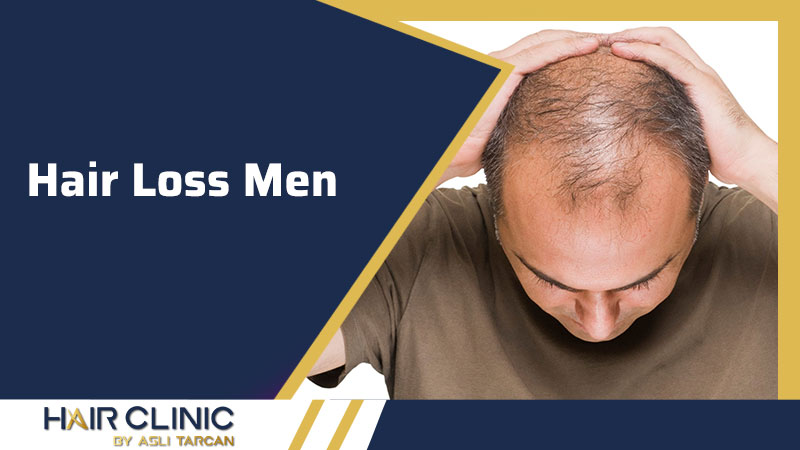Hair Loss Men. Hair loss is a common occurrence for people of all sexes. But a bald spot can still cause embarrassment and frustration and can also affect your self-esteem. The causes of hair loss in men can vary widely, such as:
- stress
- some hair care practices
- medical conditions that are inherited or related to the body’s immune system
- hormone levels
- skin health
- cancer treatment
In many cases, there are treatments available to rejuvenate bald hair or increase hair growth where it has been thinned.
But it is important to rely on proven hair growth methods and be careful with products and treatments that make great promises with little scientific evidence to support them.
Sometimes simple home remedies can work, but you may need over-the-counter (OTC) medications or prescription medications to rejuvenate your hair if home remedies do not work for you.
If these approaches are not effective, medical or surgical procedures may be needed. Read below to learn more about how baldness can be caused, how to treat it yourself, and when you may need medical help.
What are some medical treatments for a bald spot?
Before prescribing a medication or procedure to treat your bald spot, your doctor will try to diagnose any underlying condition that may be causing the problem. This may include:
- review of your medical history, including current symptoms
- a physical examination that focuses on the nature of hair loss
- “pull test”, where you pull a few hairs to see how many come out and how easily
- a blood test to look for underlying conditions
- scalp biopsy, which is the removal of certain cells or hairs from the scalp for testing in a laboratory for signs of infection or other cause of hair loss in men
Once your doctor knows what can cause your bald spot, he or she may recommend one or more of the common prescription medications for hair loss.
Hair transplant
Hair transplant surgery is a common surgery for permanent hair loss.
In this procedure, a doctor removes the follicles from an area of healthy hair growth (usually on the back of the head) and implants them in a part of the scalp that has hair loss.
There are two main hair transplant approaches:
FUT method Your doctor uses a strip of skin with hair follicles from a donor site. The follicles are removed and transplanted.
FUE method your doctor removes individual hair follicles from the donor site and inserts them into tiny incisions at the recipient’s point on your scalp.
Laser treatment
Although not widely evaluated, laser treatment has been shown in some small studies to reverse inherited hair loss in men and women.
The idea is that a low-level laser can stimulate the circulation and growth of hair in follicles that have stopped producing hair.
The results were inconsistent, so be aware that this may or may not work for you.
Androgenetic alopecia
Also known as hereditary hair loss because it tends to run in families, androgenetic alopecia is the most common cause of hair loss from the scalp.
In men, the condition is often called male pattern baldness and usually refers to hairs that fall near the temples and the top of the forehead, while the hair on the crown of the head begins to thin.
In women, female pattern baldness is different and usually starts with thinning hair all over the head.
Alopecia areata
Alopecia areata is an autoimmune condition in which your body’s immune system accidentally attacks the hair follicles.
Hair tends to fall out in small patches on the head, while eyebrows, eyelashes, and other parts of the body can also be affected.
People with alopecia areata may be at greater risk for other autoimmune diseases, such as lupus and vitiligo.
Hormonal imbalance
Discontinuing certain types of birth control may result in temporary hair loss or thinning.
Women with polycystic ovary syndrome (PCOS) may also experience hormonal imbalance that causes hair loss and other complications.
Stress
Whether it is divorce, long-term illness, work problems, financial difficulties, childbirth, or for any of the countless other reasons, stress can sometimes cause more hair than usual to appear on your brush every day.
Normally, normal hair growth returns when the cause of stress decreases or you develop different coping mechanisms.
Cancer treatment
Chemotherapy and radiotherapy can both lead to hair loss a few weeks after starting treatment.
Hair often begins to grow within a month or so after treatment. Medications to revitalize hair growth can help speed up the process.
Wearing a cooling cap before, during, and after treatments can reduce hair loss in men.
How can I deal with hair loss men?
A bald spot can be an embarrassing experience, especially if you are in your 20s or 30s.
The treatment of hair loss begins with the acceptance of the condition and then the preventive treatment of the treatment. Part of that comes from remembering that millions of people like you are going through the same experience.
While the vast majority of men experience some degree of male pattern baldness by age 70, more than half of women also have thinning hair by age 70.
To help you deal with the emotional side of hair loss, consider the following tips:
- Work with a stylist to make the most of your hair or think of products like wigs, hair extensions, scarves, and hats.
- Be open with friends and relatives about how you feel and what support you need.
- See a dermatologist early to discuss options such as medications or procedures to slow down or reverse hair loss.
- Focus on positivity and the people and things in your life that bring you joy. Exercise to feel stronger and more energetic.
As a result
It is often possible for hair to regenerate in a bald spot. You may need to try more than one type of treatment to get the results you want. Be patient and consider all your choices as you approach this very common concern.
As with any medical treatment, hair loss men solutions are not 100% guaranteed and can have side effects. If you work with our clinic’s dermatologists and doctors, be sure to talk about realistic expectations and possible risks or complications.



